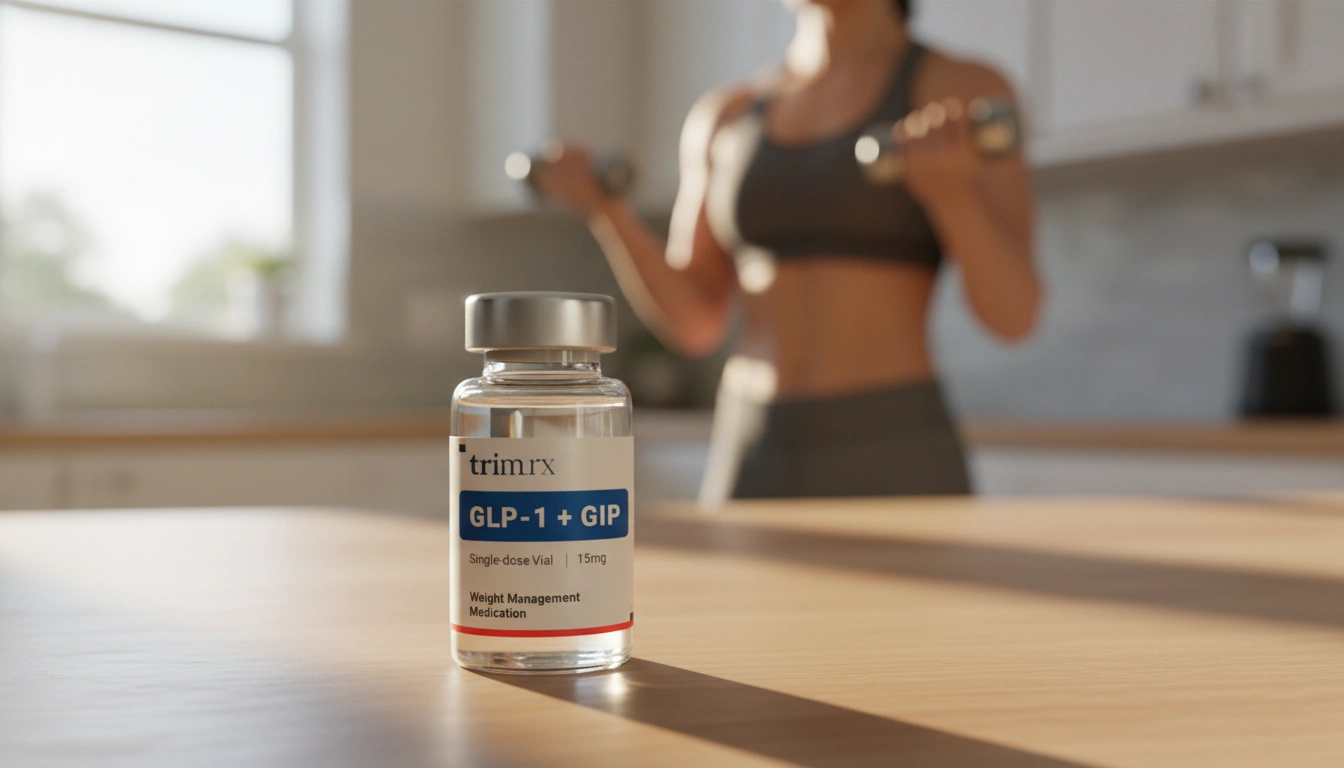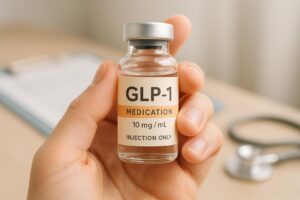How to Prevent Constipation on GLP-1 Medications: Effective Strategies for a Smooth Journey

Introduction
Did you know that nearly 24% of individuals taking GLP-1 medications for weight loss experience constipation? This surprising statistic highlights a common yet often overlooked side effect of these innovative treatments. As we embark on a journey to improve our health and manage weight, it’s essential to address the challenges that may arise, including digestive discomfort.
GLP-1 medications, such as Semaglutide and Tirzepatide, have gained significant attention for their remarkable ability to regulate blood sugar levels and promote weight loss. However, the path to achieving these benefits can sometimes be hindered by gastrointestinal side effects, with constipation being one of the most prevalent.
In this blog post, we will explore the reasons behind constipation associated with GLP-1 medications and provide practical, evidence-based strategies to help you manage and prevent this uncomfortable side effect effectively. By the end, you will have a comprehensive understanding of how to navigate this aspect of your health journey and continue to benefit from the positive effects of GLP-1 therapy without the discomfort of constipation.
We will cover the following key areas:
- Understanding the relationship between GLP-1 medications and constipation
- Effective dietary strategies to enhance digestive health
- The importance of hydration and physical activity
- Additional supportive measures to consider
- When to seek professional guidance
Let’s dive into these areas together, ensuring that your experience with GLP-1 medications is as smooth and beneficial as possible.
Understanding the Relationship Between GLP-1 Medications and Constipation
GLP-1, or glucagon-like peptide-1, is a hormone that plays a crucial role in regulating blood sugar levels and appetite. Medications that mimic this hormone, such as Ozempic®, Wegovy®, Mounjaro®, and others, have proven effective for individuals with type 2 diabetes and those seeking weight loss. However, one of the side effects of these medications is constipation, which can arise due to their impact on gastrointestinal function.
Mechanisms Behind Constipation
The primary mechanism through which GLP-1 medications contribute to constipation is by slowing down gastric emptying. This slowdown leads to delayed digestion, which can affect the entire digestive tract. As food remains in the stomach and intestines longer, the digestive system’s motility is reduced, resulting in slower transit times for both food and waste. Consequently, stool spends more time in the colon, leading to increased water absorption and, ultimately, harder and drier stools that can be challenging to pass.
Additionally, the feeling of satiety that GLP-1 medications induce may lead to a decreased appetite and lower food intake, which can also contribute to insufficient fiber intake—an essential nutrient for maintaining regular bowel movements.
The Role of Dosage
It’s important to note that the severity of constipation may be dose-dependent. Higher doses of GLP-1 medications can lead to more pronounced gastrointestinal side effects, including constipation. Therefore, discussing your medication dosage with your healthcare provider is crucial if you experience discomfort.
Effective Dietary Strategies to Enhance Digestive Health
A well-balanced diet plays a vital role in preventing constipation, especially when using GLP-1 medications. By focusing on key dietary components, we can support our digestive health and promote regular bowel movements.
1. Increase Fiber Intake
Fiber is a critical component of a constipation-preventing diet. It adds bulk to the stool, making it easier to pass through the digestive tract. We recommend aiming for at least 25-30 grams of dietary fiber per day. Here are some excellent sources of fiber to include in your diet:
- Fruits and Vegetables: Apples, bananas, berries, carrots, and leafy greens are rich in fiber and nutrients.
- Whole Grains: Incorporate whole grains such as brown rice, quinoa, oats, and whole-grain bread into your meals.
- Legumes: Beans, lentils, and chickpeas are fantastic sources of both soluble and insoluble fiber.
2. Gradually Introduce Fiber
When increasing fiber intake, it’s essential to do so gradually to avoid gas and bloating. A sudden spike in fiber can overwhelm your digestive system, leading to discomfort. Start by adding small amounts of fiber-rich foods to your diet and gradually increase the portion sizes over time.
3. Consider Fiber Supplements
If meeting your daily fiber requirement through food alone is a challenge, consider incorporating a fiber supplement. Two popular options are psyllium husk and methylcellulose. Before starting any new supplement, it’s important to consult your healthcare provider to ensure it won’t interact with your medications or exacerbate any other health issues.
The Importance of Hydration
Staying adequately hydrated is another fundamental aspect of preventing constipation. Water is essential for softening stool and facilitating its passage through the digestive tract.
Hydration Recommendations
- Daily Intake: Aim for at least 8-10 glasses of water daily, adjusting for factors like physical activity and climate. Some sources suggest that men may require around 100 ounces of water per day, while women may need about 73 ounces.
- Monitor Caffeine and Alcohol: Excessive consumption of caffeinated beverages and alcohol can contribute to dehydration, so it’s wise to moderate their intake.
Tips to Stay Hydrated
- Keep a refillable water bottle handy throughout the day.
- Set reminders on your phone to encourage regular water intake.
- If plain water feels bland, consider adding flavor enhancers or infusing your water with fruits for added taste.
Physical Activity: A Natural Solution
Physical activity is another effective way to prevent constipation. Regular exercise stimulates the muscles in the digestive tract, promoting efficient bowel movements.
Recommended Exercise Guidelines
- Aim for at least 150 minutes of moderate-intensity aerobic activity each week, coupled with muscle-strengthening activities on two or more days.
- Incorporate movement into your daily routine, such as taking brisk walks, cycling, or practicing yoga.
Post-Meal Movement
Engaging in light physical activity after meals can also aid digestion. A brief walk can help stimulate your digestive system and promote regular bowel movements.
Additional Supportive Measures to Consider
While dietary changes and hydration are critical, there are other supportive measures that can enhance your digestive health while using GLP-1 medications.
1. Monitor Your Food Choices
Keeping a food diary can help you identify which foods may exacerbate constipation. Tracking your meals, water intake, and any symptoms can provide valuable insights into your dietary patterns and help you make necessary adjustments.
2. Use Natural Remedies
Certain foods, such as prunes and prune juice, are renowned for their natural laxative properties. Prunes contain both fiber and sorbitol, a natural sugar alcohol that can aid in softening stool. Including a small serving of prunes in your diet may help encourage regular bowel movements.
3. Consult Your Healthcare Provider
If constipation persists despite dietary and lifestyle adjustments, it’s important to consult your healthcare provider. They may recommend a temporary use of over-the-counter laxatives or stool softeners, while also considering potential adjustments to your GLP-1 medication dosage.
When to Seek Professional Guidance
While mild constipation is common and can often be managed with the strategies outlined above, it’s essential to recognize when to seek professional help. If you experience constipation that lasts longer than two weeks or if it is accompanied by severe abdominal pain, bloating, or other concerning symptoms, do not hesitate to connect with your healthcare provider.
They can provide personalized guidance, recommend appropriate treatments, and ensure that your weight management plan remains effective and safe.
Conclusion
Navigating the side effects of GLP-1 medications, particularly constipation, doesn’t have to be a daunting journey. By understanding the underlying causes, implementing effective dietary strategies, staying hydrated, engaging in regular physical activity, and considering additional supportive measures, we can significantly enhance our digestive health and overall well-being.
At TrimRx, we are committed to providing personalized, medically supervised care for individuals seeking effective weight loss solutions. By partnering with us, you gain access to a supportive community and the tools needed to achieve your health goals without unnecessary discomfort.
As you embark on this journey, remember that you are not alone. We are here to support you every step of the way. If you are considering GLP-1 medications or are already using them, we encourage you to take our free assessment quiz to find out if you qualify for our personalized weight loss programs. Together, we can make your weight loss journey a successful and comfortable one.
FAQ
What are GLP-1 medications?
GLP-1 medications, such as Semaglutide and Tirzepatide, are used to manage blood sugar levels and promote weight loss by mimicking the effects of the GLP-1 hormone in the body.
Why do GLP-1 medications cause constipation?
These medications can slow down gastric emptying and decrease digestive motility, leading to harder stools and constipation.
How can I prevent constipation while on GLP-1 medications?
Increasing fiber intake, staying hydrated, engaging in regular physical activity, and monitoring your dietary choices can help prevent constipation.
When should I consult my healthcare provider about constipation?
If constipation persists for more than two weeks or is accompanied by severe symptoms, it’s important to seek professional guidance.
Can I use over-the-counter laxatives while on GLP-1 medications?
While some over-the-counter laxatives may be appropriate, it’s essential to consult your healthcare provider before using them to avoid potential interactions with your medications.

Transforming Lives, One Step at a Time
Keep reading
Tracking Progress With GLP-1: What To Measure
Learn which metrics to track on GLP‑1 therapy—weight, waist, blood sugar, lipids, side effects, and non‑scale wins—and how often to monitor them.
Fatigue Solutions for Ozempic and Wegovy Users
Hydration, protein-rich meals, light activity, and better sleep can reduce medication-related fatigue and help maintain energy during weight-loss treatment.
GLP-1 Medication Side Effect Checker
Worried about GLP-1 medication side effects? Use our free checker for Semaglutide, Liraglutide, and more to learn what to expect and stay informed!



